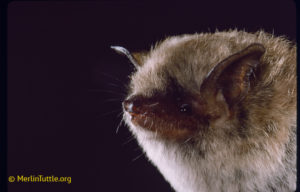Awareness of nature isn’t just an exercise for the eyes. As summer approaches, I listen for the return of the haunting song of the Swainson’s thrush. Perhaps you’ve heard it, too, while on an early evening walk in late May or June in some place with good forest cover. Stop every so often and listen for the song, an aural cue to slow down and be seduced by the lengthening days. The song spirals up and up and up, reverberating through the forest with a clear, bell-like timbre, at once suprisingly powerful and impossibly delicate.
Enchanting, yes, but also maddening, because I have found it nearly impossible to see the bird responsible for this sweet siren’s song. I once spent half an hour in a grove of towering Douglas-fir trees on Inverness Ridge at Point Reyes, scanning the foliage while the song cascaded and echoed through the high canopy above me. Despite my patience—and a wicked neck cramp—I never did manage to spot the darn thing. How could a bird so audaciously audible be so stubbornly invisible?
But perhaps nature is just as it should be. When I finally did spot a Swainson’s thrush a few years later, it was little more than a small splotch of brown against green leaves in the mottled light. Lesson 1: The song is its own reward. Lesson 2: Don’t discount the unseen.
By focusing this issue of BAY NATURE on things not readily visible, we have taken these lessons to heart. For instance, if you set out on a summer day to go “bat-watching,” you’re likely to come away disappointed, having glimpsed nothing more than ghostly silhouettes. You certainly won’t hear them singing. But bats are all around us—13 species occupying a significant niche in the Bay Area environment—as you’ll find out when you read Christine Petersen’s article, “Shadows in Flight.” In learning about these often-invisible and silent neighbors, we expand our sense of where we live and understand a little bit more of the richness and variety of life beneath the visible surface.
While it is possible to see live bats in the wild if you go to the right places at the right times, it’s impossible to see the subjects of Joe Eaton’s article, “Mastodons in Our Midst.” But read about the surprisingly diverse mammals of the Miocene era—and the landscape they inhabited—and suddenly the hills and valleys around us don’t seem quite so static and familiar. As with the Swainson’s thrush, we can only glimpse echoes of the Miocene’s bestiary; yet that long-gone period is—quite literally—part of the ground we walk on. Be sure to get out this summer onto that ground…and keep your ears (and mind) open.




